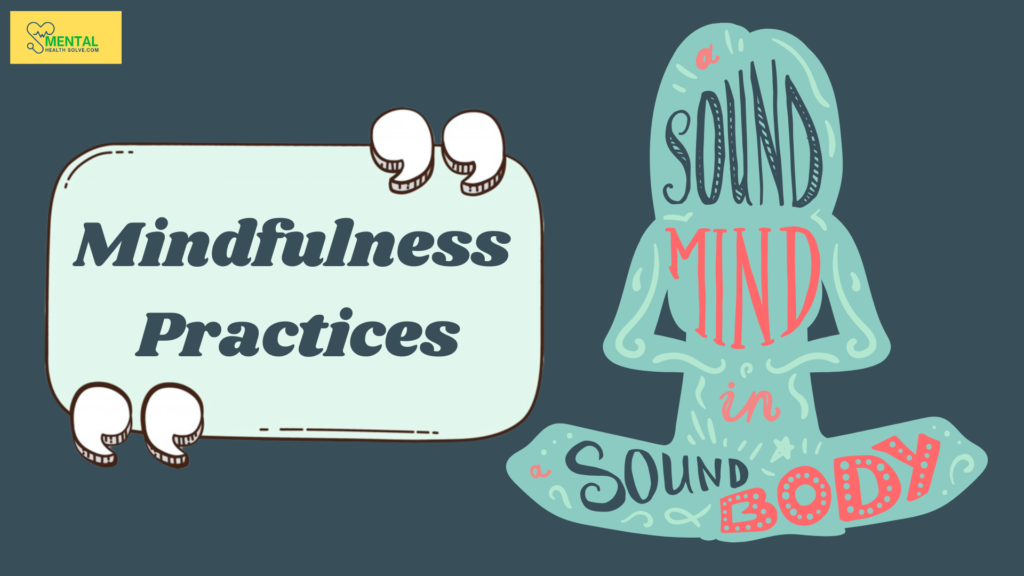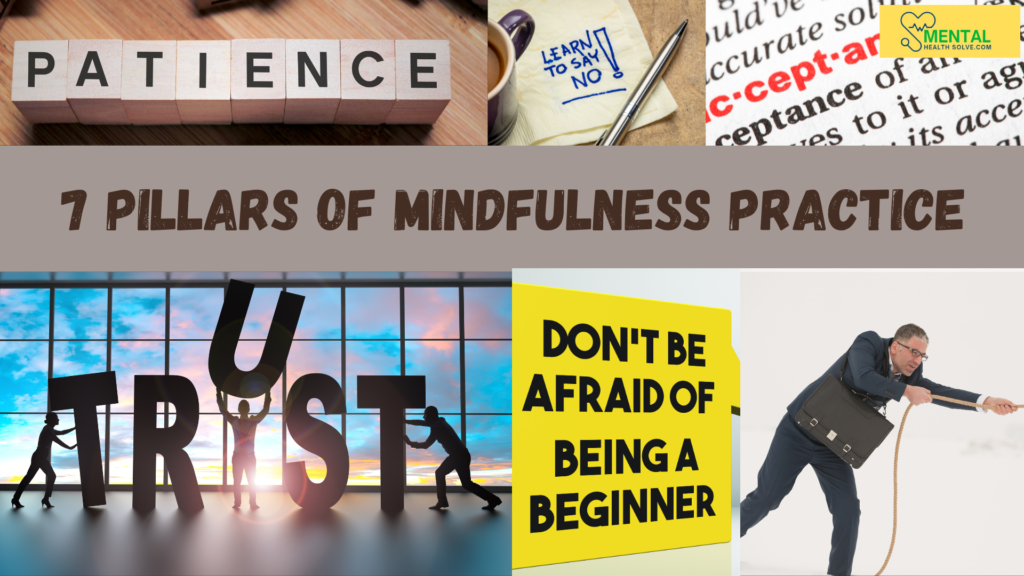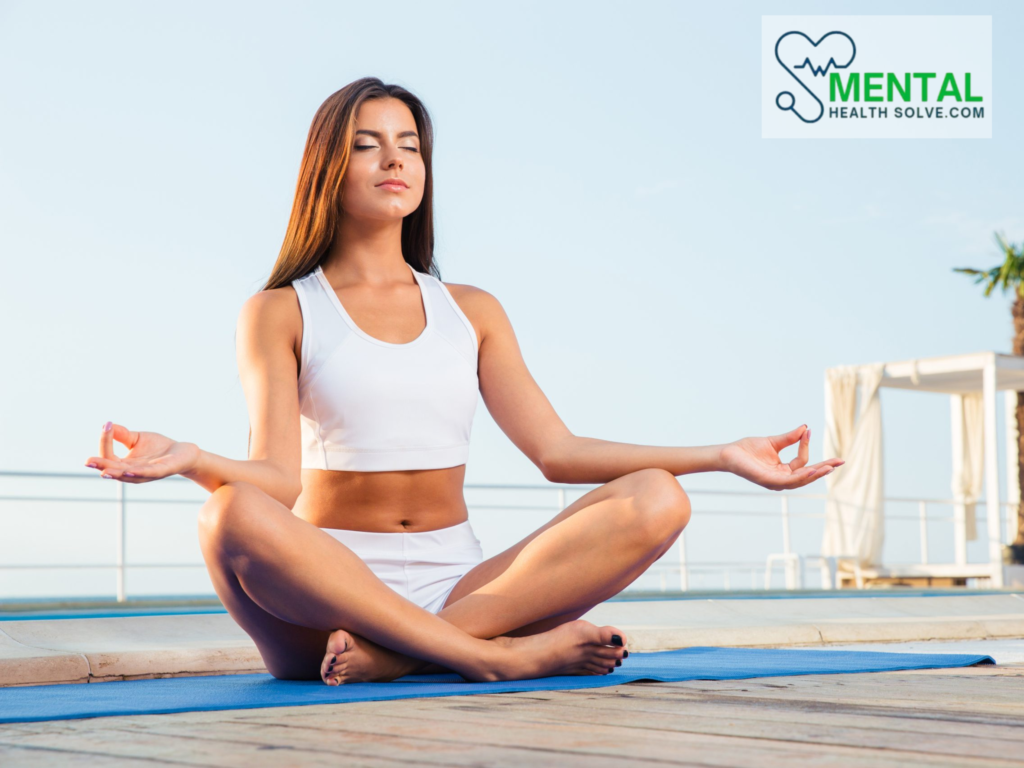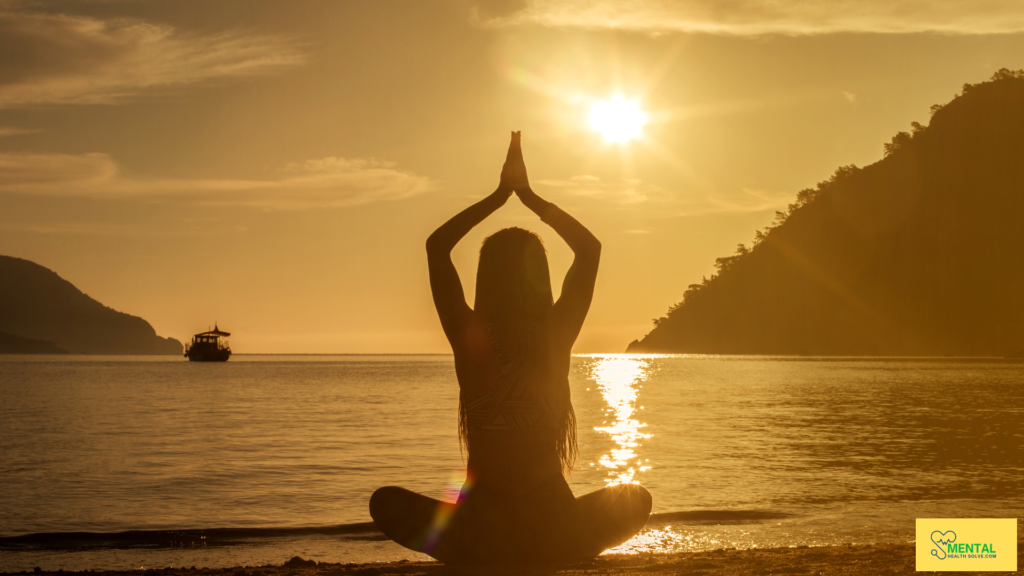Mental health and well-being are often ignored due to the daily grind, stressful conditions, brain hyperactivity, and living in the fast lane. This is why taking an amiable stance would be feasible yet very beneficial. It will help you cope with stress and balance and include time for your well-being.
To begin with and then progress on to the daily chores, one can integrate Mindfulness Practice into oneself and develop and maintain mental fitness, always be aware of one’s feelings, lift oneself off of discouragement and depression, and nurture a psychological state of being. By the way, our research shows that in Japan, employees receiving Mindfulness Practice achieve fairly lower scores on the self-rating scale of stress and its symptoms, and these subjects all reported better sleep, happiness, and quality of life.
What is Mindfulness Practices?
Our daily lives become monotonous. Daily work-life balance, educational stress, personal relationships, career ups and downs, etc., make our lifestyles racing. Somehow, we lose ourselves in maintaining day-to-day life. Mindfulness practice is a well-structured and manageable model for balancing our lives in this challenging journey.
Whenever you hear ” Mindfulness practice ?” you might think of a serious meditator sitting on their cushion or a yoga twisted in a complicated posture. However, the reality is that mindfulness practice can be found anywhere. It makes life comfortable when integrated into daily activities like washing dishes, folding clothes, grocery shopping, or caring for loved ones.
Mindfulness Practice is a broad term for meditation, mainly concerned with sensing or feeling without judgment. It can be incredibly beneficial for reducing stress, increasing emotional regulation, and promoting overall well-being.
Do you need to Mindfulness Practice?
Yes! You need to practice Mindfulness Practice. Also, anyone, regardless of age, background, or lifestyle, can practice Mindfulness:
- Beginners and Busy Individuals: A few minutes daily can make a difference.
- Students: Helps reduce educational and exam-related stress.
- Professionals: Supports work-life balance and mental clarity.
- Athletes and Performers: Enhances focus and reduces anxiety.
- Individuals Facing Anxiety or Depression: Provides a calming and therapeutic practice.
- Older Adults: Recommended by geriatricians to foster positivity, especially when coping with illness

Benefits of Mindfulness Practice
Mindfulness Practice is a reliable way to reduce stress, depression, post-traumatic situations, and anxiety. Here are some benefits of Mindfulness Practice.
Mental & Emotional Benefits
- Reduces Stress & Anxiety
- Improves Focus & Concentration
- Enhances Emotional Regulation.
- Boosts Resilience
- Encourages Positive Thinking
- Enhances Self-Awareness
- Promotes Work-Life Balance
- Encourages Gratitude & Happiness
Physical Health Benefits
- Lowers Blood Pressure
- Improves Sleep Quality
- Boosts Immune Function
- Reduces Chronic Pain
- Encourages Healthy Lifestyle Choices
Making Mindfulness Practice as a Daily Habit
Practising Mindfulness is a self-relaxing way to induce positive vibes and emotions in your lifestyle. According to research, Mindfulness can help one incorporate a more positive and resilient mindset. Over time, it can help you become more aware of your feelings and emotions.
Mindfulness is a journey, so try small steps to practice it in your daily routine. Try the following steps to start the journey, and observe how it makes you feel positive.

7 Pillars of Mindfulness Practice
Jon Kabat-Zinn, the founder of Mindfulness-Based Stress Reduction (MBSR), introduced this. These aptitudes help cultivate a deeper sense of awareness and presence.
1. Non-Judging: Your mind should keep thinking about everything easily. Judging too much can cause you to lose your patience. By judging too much, you may become more anxious about things, which can be more frustrating in the long term. Apart from that, you have to be more concerned when someone is doing something optimistic in front of you. So Avoid judging others and focus on yourself.
2. Patience: If you want something to do, go ahead. Practice daily, and it will become a habit. Patience is a noble virtue. Everyone should incorporate it into themselves. By having patience and calm, you become a more relaxed person as well, and your anxiety nature will be demolished.
3. Beginner’s Mind: A beginner’s mind continuously senses curiosity about everything. Always find a new perspective and way to see the world. By doing this, you can learn new things every minute of your life and be more graceful about everything.
4. Trust: Try to trust yourself more than people. When you trust people, you are actually trusting yourself with great beliefs. Trusting is very difficult, but earning this quality can make someone more graceful and calm. Also, they can be more relaxed-minded.
5. Non-Striving: Keep working without trying to achieve any specific outcome. Just take it easy and keep working. If you are sure to do hard work without any outcome, your mind will become calmer and more relaxed, and you will let nature do things for you.

6. Acceptance: Understand where you stand and those around you, and work on what you can do about your future. Accept all your destiny and future. Without worrying about things, accept your ups and downs, graces, and flaws. You must earn the quality of a peaceful environment around you.
Dive Deeper into Mindfulness Exercise
1. Mindful Breathing: First, get into a comfortable position, such as sitting or lying down. Close your eyes and take a few deep breaths through your nose for a few seconds. This might be a 5-10 minute activity. This is a wonderful practice.
2. Body Scan: Before the body scan, sit or lie down quietly, close your eyes, and take deep breaths. Then, slowly pay attention to different body parts, starting with your toes and going up to your head. With each part, note any feelings, rigidity, or aches. Resist neither the desire to eliminate nor the quasi-obsession; instead, observe. It could take 10-20 minute periods at a time.
3. Mindful Walking: Select an area indoors or outdoors and walk alone but peacefully. While you move, concentrate on the bodily sensations—the bending of your knees, the feeling of your feet touching the ground, and the rhythm of your breath. Moreover, do not forget to observe what is around you, the scene, sounds and smells. Let this exercise take a maximum of 10-20 minutes.
4. Mindful Eating: First, slow down and examine how the food appears. For instance, the examples will include, “Max, you can eat various fruits and vegetables in different colours to add variety to your meal and uplift your mood.” Focus on how it feels in your mouth, the taste of it, and the thoughts that come to your mind while eating. Then, choose the meal or snack time depending on your preference.
5. Mindful listening: Sit quietly with your eyes closed and tune into the sounds around you, whether near or far. Simply observe them without labelling or judging—notice them as they come and go. Some fresh music or sounds like forest adventure, Raindrops, Beach waves, peaceful nights, etc.
6. Loving-Kindness Meditation: Begin by thinking of yourself and silently repeating phrases like, “May I be happy, may I be healthy, may I be at ease.” Then, gradually extend these wishes to others—loved ones, acquaintances, even people you may have difficulties with.
7. 5-4-3-2-1 Grounding Method: Identify five things you see, four things you touch, three things you hear, two things you smell, and one thing you taste.
According to the research, mindfulness is one of the best practices for ensuring positive health and mind. The key is to practice regularly, even for a few minutes daily. Over time, mindfulness can help you become more aware of your thoughts and emotions, allowing you to respond to situations more clearly and less reactively.
Best time to practice Mindfulness
Consistently intentional is the key, so you will want to find a time that fits naturally into your routine. Finding the right time to practice Mindfulness that suits your lifestyle and personal preference is the best time to do it. Here are some great options:
• Morning: It helps set a calm and focused tone for the day. It is also the best time to learn mindfulness practice.
• During Breaks: A quick mindfulness exercise can refresh your mind at work or school. So it would be better if you could do it regularly.
• Before Meals: Mindful eating enhances appreciation and digestion. Always incorporate good and fresh foods into your daily diet.
• Evening: Helps unwind, relax, and improve sleep quality.

Final Thoughts
Including Mindfulness in your daily lifestyle can potentially have life-altering effects on your mental, emotional, and physical well-being. Regular practice can cultivate greater awareness, resilience, and inner peace. Take the first step today and embrace mindfulness as a tool for a happier, healthier life.
If someone needs professional support for dealing with profound mental illness like depression, anxiety, or stress, they can consult with a Mental health technician.
Also,, you can try a fitness routine to relax your total mental model and stress https://mentalhealthsolve.com/ultimate-fitness-programs-with-workouts/
